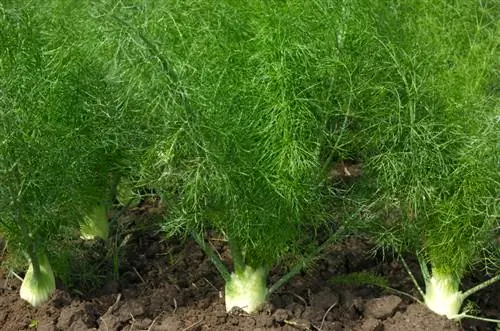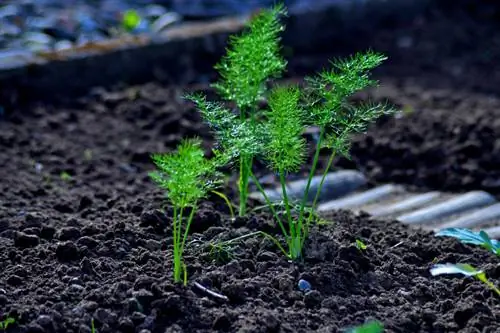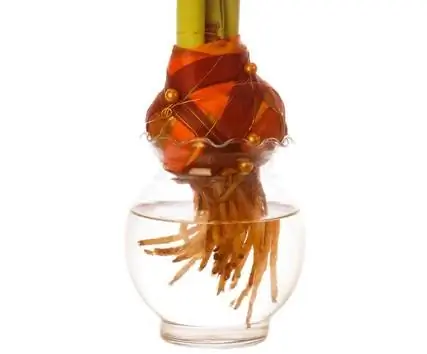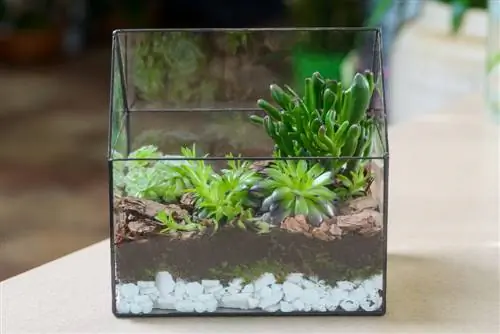- Author admin [email protected].
- Public 2023-12-16 16:46.
- Last modified 2025-01-23 11:19.
Fennel is a matter of taste as a vegetable due to its intense and herbal taste. You can enjoy the tubers of this plant either raw or cooked. The dried seeds of fennel can be used in various beauty treatments and medicinal applications.
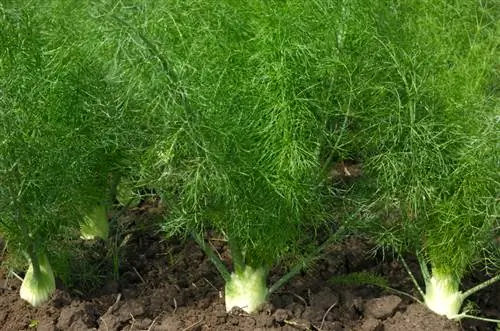
How can I grow fennel successfully?
To grow fennel, choose the right variety (tuber fennel or spice fennel), pre-plant from March at room temperature, separate into the open ground in May and make sure there is sufficient watering. Fennel prefers loose, deep, nutrient-rich soil and sunny locations.
The choice of variety depending on the type of use
When it comes to fennel, there is a basic distinction between wild fennel, bulb fennel and spiced fennel. The latter is particularly suitable for harvesting the flavorful fennel seeds. However, bulbous fennel also produces its umbel-like inflorescences under suitable conditions.
Spice fennel for teas, masks and ointments
Spiced fennel varieties tend to have particularly pronounced flowers. This also enables a comparatively higher yield of fennel seeds compared to bulb fennel. If you want to grow fennel primarily for the use of the seeds in beauty masks, medicinal herbal mixtures and stomach teas, you should specifically sow spice fennel.
Tasty side dishes made from thick fennel bulbs
With celeriac, breeding is aimed at ensuring that flowering is as delayed and weak as possible. This allows the plants in your garden to form thick tubers in a suitable location. These in turn can be cut into pieces and cooked and served as an aromatic side dish.
Solid varieties of celeriac
Since celeriac requires the largest possible tuber, the plants should be prevented from flowering as much as possible. This can be done by sowing late in June, but the tubers will only ripen in time for winter in raised beds or in wine-growing climates. So-called bolt-resistant varieties can also be grown in March without tending to bloom early in the summer.
The ideal location
Fennel plants grow particularly well in loose and deep soil. The soil should have sufficient nutrients and ideally be in the sun if possible. Since fennel tends to sprout when there is too much dryness and stagnant heat, it is important to ensure adequate watering, especially with bulbous fennel.
Fennel season is determined by location
Overall, the average cultivation time for fennel is around 12 weeks. In particularly mild locations or in raised beds, late direct sowing outdoors in June is also possible; the information in the seed instructions should be followed. Otherwise, if possible, fennel should be grown at room temperature from March onwards and isolated outdoors from May onwards in order to be ready for harvest in the summer season.
The pre-culture in the room
Since fennel is sensitive to cold, it should be covered with a protective fleece (€6.00 at Amazon) when sowing directly outdoors at the beginning of May. When pre-cultivating in the room, the ideal germination temperature should be between 20 and 22° Celsius. After germination, the temperature must be reduced to a maximum of 16° Celsius, otherwise the root neck will become too long and unstable.
Tips & Tricks
Fennel, like all other umbelliferous plants, should only be grown in the same location every three years. Lettuce, cauliflower, radishes and all legumes are suitable as pre-crops.

